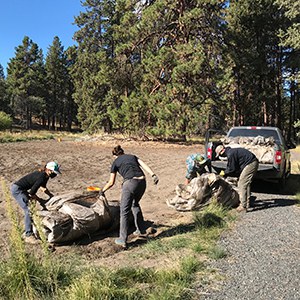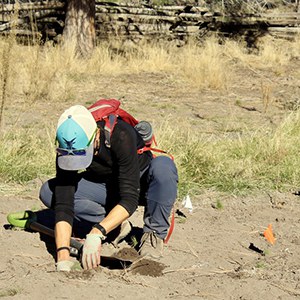The Land Trust has been busy this fall! In October, we worked with volunteers and planting crews to continue to restore native plant communities at Camp Polk Meadow Preserve! Native grasses, wildflowers, and shrubs were all planted in the Hindman Springs portion of the Preserve as part of a multi-year restoration project.
This native plant restoration project started in 2018 when we solarized 1/2 acre and then planted 3,700 native plants. These were mostly bunchgrasses, wildflowers, and shrubs for the drier areas with some wetland wildflowers, sedges, and rushes to supplement and diversify the area near the spring and ponds. We also spread native seed—six grass species and two wildflower species: yarrow and blue flax. Last year, we solarized 1/3 acre and planted 2,500 new native plants and spread native seed.
This restoration is part of a larger effort to preserve and restore the historic Hindman Springs portion of Camp Polk Meadow Preserve. We rebuilt the Hindman Springs area trail in August of 2017, stabilized the Hindman barn in January of 2018, created a new historic interpretive trail in June 2019, and have been working to restore native plant communities since 2018.
Many thanks to the Oregon Community Foundation Historic Trails Fund, the Roundhouse Foundation, the Laird Norton Foundation, East Cascade Audubon Society, and private donors for making the Hindman Springs area preservation and restoration possible!


